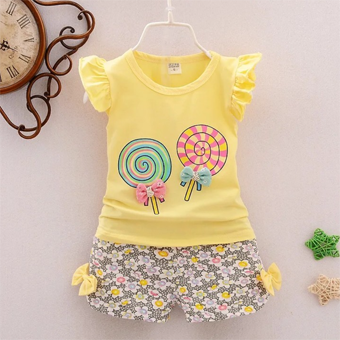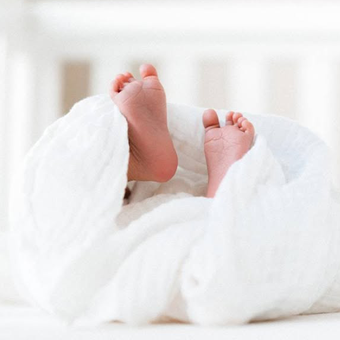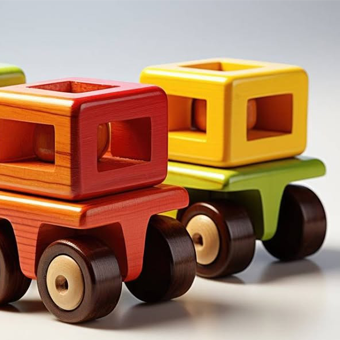Treating postpartum depression benefits babies
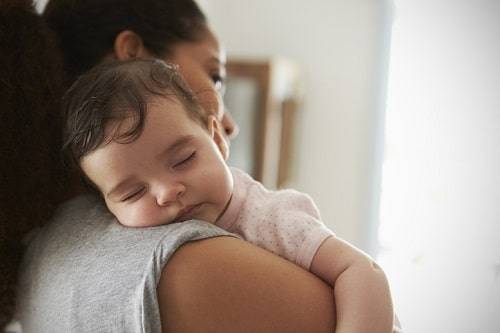
© 2021 Gwen Dewar, Ph.D., all rights reserved
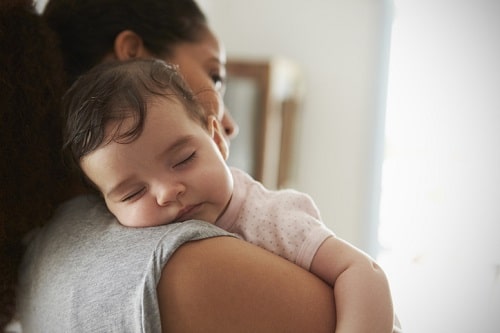
Treating postpartum depression is crucial for the well-being of mothers, but studies suggest that it benefits babies, too — improving an infant’s ability to regulate emotions.
Imagine you’re a baby. You are sitting on your mother’s lap, facing forward, while a friendly stranger does the following:
1. The stranger places a little cap on your head — a lightweight, painless device fitted with electrodes for detecting brain activity.
2. The stranger also attaches some electrodes to your back, in order to measure variations in heart activity.
3. The stranger shows you an interesting toy, holding it up in front of your face.
You’re with your mother the whole time, so you don’t feel abandoned.
But of course it can be stressful, interacting with a stranger. And your mother doesn’t talk to you while all this is going on. She’s silent.
So how do you behave? What sorts of physiological changes do you experience?
It depends, of course, on a lot of things, including your personal temperament. But it also depends on whether or not your mother is clinically depressed.
When women suffer from postpartum depression, or PPD, their infants tend to be less soothable and less cuddly. Their babies show less pleasure or enjoyment during laid-back, low key activities. Their babies pay less attention to things, too.
And in a situation like this — meeting a friendly stranger — these babies are more likely to experience physiological reactions that are linked with stress, negative emotions, and behavior problems.
For example, consider things from the perspective of brain activity.
If you’re a baby meeting a friendly stranger, a healthy response is to show heightened electrical activity on left side of the frontal regions of the brain. This pattern of asymmetry (left over right) is linked with the development of better emotion regulation.
But when babies are growing up with depressed mothers, they may show the opposite pattern — greater electrical activity on the right side of the frontal cortex. It’s a pattern associated with negative emotions and social withdrawal.
Then there’s the evidence of heart rate variability.
When you meet someone new, the ideal response is to experience lots of variability in heart rate. It’s an indication that you can switch gears quickly, that you’re flexible. Not overly stressed-out.
But unfortunately, infants with depressed mothers tend to experience lower levels of heart variability. And that’s a sign that something isn’t right — that the brain is having more trouble coping with stress.
There are other signs, too. For instance, a famous experimental technique is to see how babies react to a “still face” — the sudden adoption of a blank expression by someone looking at them.
Babies don’t like it, as you might expect. But the babies of depressed mothers are a special case: If their mother adopts a “still face,” they are more likely to respond by trying to disengage from her (Ntow et al 2021).
And there are worrying, long-term trends.
When mothers suffer from postnatal depression, kids are at higher risk for poor cognitive outcomes. They tend to develop language abilities at a slower pace. They are more likely to develop behavior problems and mood disorders (Slomian et al 2019).
Why is maternal depression linked with worse child outcomes?
To some degree, it’s a reflection of shared genes. Genetic factors can put a woman at higher risk for emotional difficulties — including postpartum depression. If her child inherits these genetic factors, that child is more likely to develop problems with emotional regulation.
But there’s also a big environmental component.
When parents are depressed, they don’t relate to their children in the same way.
They may show less warmth, closeness, and sensitivity, and they’re less likely engage their kids in responsive, contingent, turn-taking conversations (Bind et al 2021).
In addition, studies suggest that depressed parents are less likely to read to their children, or to play games with them (Slomian et al 2019). They are less likely to share smiles and positive emotions (Slomian et al 2019).
So depression makes it harder for us to “tune in” to our children. It can set the parent-child relationship on the wrong track, and prevent us from providing kids with crucial learning experiences. Little wonder if children struggle.
Disturbing? Of course. But this isn’t a tale of doom and gloom. Kids aren’t stuck on an irreversible track.
Evidence that treating postpartum depression helps infant emotion regulation
How can we test the idea that treating postpartum depression is beneficial to babies?
Controlled, randomized experiments are usually the best way to answer such questions. But here we have a big ethical problem. Nobody wants to take a bunch of depressed mothers, and randomly assign families to different experimental conditions.
Help some mothers, and ignore the rest. Then see how their babies turn out.
Not really acceptable.
So John Krzeczkowski and his colleagues — researchers at McMaster University — have tried another approach.
First, you recruit mothers who have been diagnosed with major depressive disorder in the 12 months since giving birth.
Then you match these mothers with a control group — women who aren’t depressed, but who have babies of the same age and sex, and who come from similar socioeconomic backgrounds.
The next step is to test all the babies. Find out what they are like at baseline — before you help the depressed mothers.
After these preliminary tests, you provide the struggling mothers with therapy. Then you re-test the babies, and see if the children of depressed mothers have improved. Are they reacting the same as before? Or are they beginning to look more like the healthy children of non-depressed mothers?
Krzeczkowski and his team did this in two separate studies, and in both cases, they saw improvements.
In one study, researchers tested babies’ reactions to that “friendly-stranger-with-a-toy” situation.
The babies with depressed mothers showed evidence of poorer emotional regulation on every measure — lower scores on behaviors like soothability; greater electrical activity on the right side of the frontal cortex; and reduced heart rate variability.
But that was before mothers completed 9 weeks of cognitive behavioral therapy, a type of “talk” therapy that helps you identify maladaptive thinking and habits, and then replace these with effective, problem-solving strategies.
After this treatment, the babies improved — so much so that their responses were indistinguishable from those of infants in the control group. They reacted and behaved like the babies of mothers who had never experienced postpartum depression (Krzeczkowski et al 2020).
That’s good news, and it was echoed in a second study — a study where the researchers tested how babies responded to a “still face.”
Before depressed mothers got treatment, their infants showed a heightened tendency to withdraw in the “still face” situation.
But immediately afterwards? They became less withdrawn. And in the following months, these babies continued to improve to the point where their responses were indistinguishable from those of babies whose moms had never struggled with PPD (Ntow et al 2021).
Does this mean that everything will go well if mothers get treatment for postpartum depression?
Treatment is really important, especially given how long-lasting postpartum depression can be. In a recent study of American mothers, 25% were still experiencing depression symptoms at three years postpartum (Putnick et al 2020). This isn’t something you want to “wait out.”
But it’s also crucial to realize that treating postpartum depression is only part of the solution.
As noted above, depression can steer the parent-child relationship off-course. It’s not unusual for families to get caught up in a vicious circle — reacting to each other in ways that keep triggering more negativity. Recovering from depression is helpful, but it won’t necessarily change all of these behaviors. Not if they’ve become habits.
So sometimes treating the depression isn’t enough. Parents need help getting the parent-child relationship back on track. This includes learning to read their babies’ behavioral cues, and coming up with the best responses — responses that will enhance the parent-child bond, and support the development of emotional and social skills.
Is there a go-to therapy for improving parent-child interactions?
Researchers have tested a number of approaches, including
- Video feedback. The parent and child are video-recorded during everyday activities, and later viewed with a counselor who points out moments where the parent was especially attuned to the child’s signals.
- Parent-infant psychotherapy. A therapist meets with both parent and child, and helps the parent discover an individualized approach to improving the child’s behavior.
- Parent-child interaction therapy (PCIT). An approach for coping with behavior problems in children ages 2-7, PCIT provides parents with “live” coaching.
- Group-based interventions that combine direct instruction (on how to better understand your child’s cues) with real-time practice, during parent-child play.
There are studies supporting the use of these techniques, but unfortunately much of the research lacks rigorous controls. So experts often rate the evidence as promising, but inconclusive (e.g., Barlow et al 2015; O’Hara et al 2019).
But I think it’s a good bet that any approach is worthwhile if it helps you (1) understand and tune into your baby; (2) foster positive emotions and defuse stress; and (3) feel respected, supported, and capable.
Along these lines, a recent study published in Australia reports good results for a group-based parenting program for mothers recovering from depression.
All mothers in the study received cognitive behavioral therapy for postpartum depression, but only half of them were randomly assigned to receive an additional treatment for improving the parent-infant relationship: four sessions that focused on observing and understanding infant cues, and learning how to respond to these cues in ways that promote good feelings and a healthy attachment bond (Holt et al 2021; Milgrom and Holt 2014).
Compared to mother-infant pairs in the control group, mother-infant pairs in the treatment group were less likely — six months later — to experience impaired bonding (Holt et al 2021).
More information about postpartum depression, treatment, and improving parent-child interactions
Wondering if you — or someone you know — is suffering from postpartum depression?
You should discuss your concerns with a medical provider. But you can also preview the standard screening tool — the Edinburgh Postnatal Depression Scale — and learn more about how doctors distinguish between postpartum depression and less severe mood disorders.
You can read more about it in my article, “Postpartum depression symptoms: When is it more than the “baby blues?”
For more information about parent-child bonding, see my article, “The Strange Situation test: Is your child securely attached?”
And for keeping your parent-child relationship on track, check out these Parenting Science offerings.
References: Treating postpartum depression
Barlow J, Bennett C, Midgley N, Larkin SK, Wei Y. 2015. Parent-infant psychotherapy for improving parental and infant mental health. Cochrane Database Syst Rev. 1:CD010534.
Bind RH, Biaggi A, Bairead A, Du Preez A, Hazelgrove K, Waites F, Conroy S, Dazzan P, Osborne S, Pawlby S, Sethna V, Pariante CM. 2021. Mother-infant interaction in women with depression in pregnancy and in women with a history of depression: the Psychiatry Research and Motherhood – Depression (PRAM-D) study. BJPsych Open. 7(3):e100.
Holt C, Gentilleau C, Gemmill AW, Milgrom J. 2021. Improving the mother-infant relationship following postnatal depression: a randomised controlled trial of a brief intervention (HUGS). Arch Womens Ment Health. 2021 Mar 19. doi: 10.1007/s00737-021-01116-5. Online ahead of print.
Krzeczkowski JE, Schmidt LA, Van Lieshout RJ. 2020. Changes in infant emotion regulation following maternal cognitive behavioral therapy for postpartum depression. Depress Anxiety. 2021 Apr;38(4):412-421.
McLearn KT, Minkovitz CS, Strobino DM, Marks E, Hou W. 2006. Maternal depressive symptoms at 2 to 4 months post partum and early parenting practices. Arch Pediatr Adolesc Med. 160(3):279-84
Milgrom J and Holt C. 2014. Early intervention to protect the mother-infant relationship following postnatal depression: study protocol for a randomised controlled trial. Trials. 15:385.
Ntow KO, Krzeczkowski JE, Amani B, Savoy CD, Schmidt LA, Van Lieshout RJ. 2021. Maternal and Infant Performance on the Face-to-Face Still-Face Task following Maternal Cognitive Behavioral Therapy for Postpartum Depression. J Affect Disord. 2021 Jan 1;278:583-591. doi: 10.1016/j.jad.2020.09.101. Epub 2020 Sep 29. PMID: 33032029
O’Hara L, Smith ER, Barlow J, Livingstone N, Herath NI, Wei Y, Spreckelsen TF, and Macdonald G. 2019. Video feedback for parental sensitivity and attachment security in children under five years. Cochrane Database Syst Rev. 11(11):CD012348.
Putnick DL, Sundaram R, Bell EM, Ghassabian A, Goldstein RB, Robinson SL, Vafai Y, Gilman SE, Yeung E. 2020. Trajectories of Maternal Postpartum Depressive Symptoms. Pediatrics. 146(5):e20200857. doi: 10.1542/peds.2020-0857.
Rogers A, Obst S, Teague SJ, Rossen L, Spry EA, Macdonald JA, Sunderland M, Olsson CA, Youssef G, Hutchinson D. 2020. Association Between Maternal Perinatal Depression and Anxiety and Child and Adolescent Development: A Meta-analysis. JAMA Pediatr. 174(11):1082-1092.
Slomian J, Honvo G, Emonts P, Reginster JY, Bruyère O. 2019. Consequences of maternal postpartum depression: A systematic review of maternal and infant outcomes. Womens Health (Lond). 15:1745506519844044.
Content of “Treating postpartum depression benefits babies” last modifed 7/26/21
image by monkeybusinessimages / istock

